Abstract
From a critical re-elaboration of the Gramsci’s analytical categories of war of position and war of movement, in an inter-scale perspective, the different power structures and how they position themselves in the face of the global health crisis in search of hegemony are analyzed. Such perspectives point to the covid-19 pandemic as a geopolitical issue and highlight how the strategies of supra-state bodies (WTO, WHO, ILO), States and sectoral economic groups materialize as territorial determinations developed over a fragmented civil society, particularly in the most vulnerable strata (indigenous peoples, peasants and black communities). These territorial determinations express a set of power relations for the realization of the form of value.
Keywords:
War of Position; War of Movement; Territorial Determinations; Power Relations
The spread of contamination by the Sars-Cov-2 virus was established as an element in the global geopolitical game when the World Health Organization (WHO) declared a pandemic situation on March 12, 2020, and in a short time the presidents of two great powers (United States and France) treated global health as a war conflict. The expressions “a war against the invisible enemy” and “nous sommes en guerre,” by Donald Trump (2020TRUMP, D. Remarks by President Trump in a meeting with supply chain distributors on covid-19. U.S. Embassy & Consulates in Italy, Rome, 29 mar. 2020. Disponível em: <Disponível em: https://bit.ly/37jXJJD >. Acesso em: 15 fev. 2021.
https://bit.ly/37jXJJD... ) and Emmanuel Macron (2020MACRON, E. Addresse aux français du président de la République Emmanuel Macron. Élysée, Paris, 16 mar. 2020. Disponível em: <Disponível em: https://bit.ly/3boaVyr >. Acesso em: 15 fev. 2021.
https://bit.ly/3boaVyr... ), respectively, set the tone for the debate.
The conflict-of-war dimension gives the problem a geopolitical magnitude, and American writers pointed to Trump triggering or directing his speech to Article 5 of the North Atlantic Treaty (Kempe, 2020KEMPE, F. Why Trump should trigger Nato’s Article 5 vs. covid-19. Atlantic Council, Washington, DC, 14 mar. 2020. Disponível em: <Disponível em: https://bit.ly/2NBCvjr >. Acesso em: 17 fev. 2021.
https://bit.ly/2NBCvjr... ), building a line of unity for the countries affected by what was called “Chinese virus,” generating noise and discomfort in the world diplomatic field. The fact is that these elements lead the sanitary crisis to a geopolitical treatment, demanding to analyze the strategies of States, supra-state entities, economic groups and the established power relations and, for that, we set a reinterpretation of the concepts of war of position and of movement11Antonio Gramsci (1982) developed an analysis of war of position based on the strategies of struggles in the field of hegemony in Western civil societies, and war of movement as an explanatory element of the Eastern revolutionary processes. We understand that the concepts cannot be treated as geographic antinomies, but as dialectical pairs and that manifest themselves contradictorily within the historical process and that are not only linked to revolutionary, but also counter-revolutionary movements. The understanding is that at the core, states, supra-state structures, economic sectors and civil society are categorical (historicalmaterial) elements that mediate a central conflictual base: the class struggle. to analyze the conflicts that emerge at different scales.
This theoretical movement of Wars of Position and of Movement, in its hegemonic and counter-hegemonic manifestations, determines scalar spatial levels (global, regional, national and sectorial) of geopolitical disputes as developments caused by the Sars-Cov-2 pandemic, reflecting processes of deterrence, intervention and coercion. The war of position as a strategy to guarantee or elevate the protagonism of political and economic governance and of Movement in the concrete advances of appropriation of value materializes in a more violent way the greater the proximity of its genesis (added value and income of the land).
On a world scale, supra-state institutions, on the one hand, WHO, although without power of approval, has consolidated an important role and breaking with impediments to humanitarian aid. On the other hand, the World Trade Organization (WTO) places itself even more as a secondary role in face of the positioning of blocs and States that impose tariffs and controls on goods and immigration. In this process, at least in the last few months, the only line of unblocking flows refers to medical supplies and food, the latter under strong appeal from the Food and Agriculture Organization of the United Nations (FAO) to eliminate trade restrictions and increase the agricultural production (Covid-19: using…, 2020COVID-19: USING economic stimulus to reduce the long-term hunger impact. FAO, Rome, 30 abr. 2020. Disponível em: <Disponível em: https://bit.ly/2NFbfQP >. Acesso em: 28 abr. 2020.
https://bit.ly/2NFbfQP... ). This scenario of controversial importance of the agencies denotes the behavior of the pandemic indicators in countries that have observed and that have not observed the control guidelines presented by the WHO director, Ethiopian biologist Tedros Adhanom Ghebreyesus, mainly Brazil, United States, Italy and Spain (Graph 1).
It is feasible to understand that the world is faced with a multipolar power structure, but duality has been notorious, even though China strategically refuses to be in this position and signals a multipolar perspective. This process is evident in the case of the covid-19 crisis, not only due to bravado and insinuations about the origin of Sars-Cov-2, but by two central elements: the market structure and the leadership position in the world.
In the structure of markets there is a truce in the trade conflict, anti-dumping policies, the demand for opening markets and the strategies for repatriation of capital/investments imposed by the United States are losing strength (Gruszczynski; Lawrence, 2019GRUSZCZYNSKI, L.; LAWRENCE, J. Trump, international trade and populismo. In: NIJMAN, J.; WERNER, W. (Ed.). Netherlands yearbook of international law 2018. Fort Lauderdale: Springer, 2019. p. 19-44.). The agreement provides for the expansion of purchases of products from the countries and the reduction of tariffs, mainly because China has global power in the market of active ingredients for pharmaceutical drugs. In 2018, it accounted for 95% of ibuprofen imports from the United States, 91% of hydrocortisone, 40-45% of penicillin and 40% of heparin (Palmer; Bermingham, 2019PALMER, D.; BERMINGHAM, F. U.S. policymakers worry about China “weaponizing” drug exports. Politico, Arlington, 20 dez. 2019. Disponível em: <Disponível em: https://politi.co/2QXHidx >. Acesso em: 17 fev. 2021.
https://politi.co/2QXHidx... ).
Graphs 2 and 3 and Map 1 clearly show China’s import positions, its preferential strategies (Germany, France and Ireland, new markets) and reduction in dependence on US markets in the period 2010-2019 for pharmaceutical products and medical supplies, which explains trade conflicts and Trump’s repatriation strategies for US companies and capital. In terms of total exports and imports, with restrictions, China reduced the United States’ participation from 19% to 16%, and from 8.9% to 5.9%, respectively, in the period under analysis. Graphs 3 and 4 and Map 2 show Chinese exports. It is observed that the drug curves show a significant growth trajectory in the period, reinforcing the American dependence on active ingredients of the Chinese market. In Graph 5, exports of equipment and supplies show a negative inflection and a reduction in the growth curve.
Main destinations for Chinese exports of medical equipment and supplies in general, 2010-2019
The post-crisis issue is based on its own development and the United States will maintain its protectionist and endogenous strategy in the face of the necessary peace and development policies in the world, in view of the reduction of contingents of doctors and health personnel, of chemical and pharmaceutical supplies in several countries, mainly in Europe, and the forecasts of a reduction in world economic growth, for example (Trade…, 2020TRADE and covid-19. The World Bank, Washington, DC, 2020. Disponível em: <Disponível em: https://bit.ly/3qHCI32 >. Acesso em: 29 abr. 2020.
https://bit.ly/3qHCI32... ). The question is whether the position of Chinese humanitarian aid can be extended in the economic sphere and will produce a new Marshall Plan, backed by China, and reorder global supremacy. Chinese dominance over medical supply chains has been proven with the number of equipment destined for European countries and the world, including the United States. According to Schmidhuber (2020SCHMIDHUBER, J. Coronavirus geopolitics: germs and the rise of empires. Supsi, Lugano, 3 abr. 2020. Disponível em: <Disponível em: https://bit.ly/3bIMkVd >. Acesso em: 22 fev. 2021.
https://bit.ly/3bIMkVd... ), the Marshall Plan brought together investments of US$ 130 billion (current values), and triggered up to 0.35% of the additional growth of the gross domestic product. A Marshall medical plan would require a small fraction of the ongoing initiative (Belt and Road) that reaches volumes of US$ 10 billion annually and, for President Xi Jinping, it is the greatest influence on international economic governance from a specific regional initiative of trade and investment (Huang, 2016HUANG, Y. Understanding China’s belt & road initiative: motivation, framework and assessment. China Economic Review, Amsterdam, v. 40, p. 314-321, 2016.). This picture needs to be analyzed in the face of a contraction of gross domestic product in the United States between -10% and -25% and for the euro area between -15% and -22%, considering the problems to be faced in Latin America, Africa and the Middle East (European Commission, 2020EUROPEAN COMMISSION. Communication from the Commission: amendment to the Temporary Framework for State aid measures to support the economy in the current covid-19 outbreak. Brussels, 20 mar. 2020. Disponível em: <Disponível em: https://bit.ly/3pu5ovc >. Acesso em: 17 fev. 2021.
https://bit.ly/3pu5ovc... ). In this sense, Maps 3 to 6 show the flow of covid-19 medical supplies in April 2020, exports and trade balance in China (Maps 3 and 4) and in the United States (Maps 5 and 6). It is up to us to reflect on the deconcentration of the flow and the surplus balance of China in comparison with the United States.
Graph 6 shows the main flows to countries with higher levels of contamination and it is possible to observe in this sense the importance that China assumes in this scenario.
Chinese exports of covid-19 related supplies, selected countries, October/2019-May/2020 (thousand US$)
Graph 7 shows the contamination position of covid-19 in the main Chinese supply markets. It is observed that Brazil and the United States are the only countries that have an increasing trajectory of deaths, compared to the stabilized trajectories of the other countries.
Still at the regional level, the euro zone, with the indicators of economic retraction and the issue of Brexit with a new extension to 12/31/2020, its picture has been underestimated since the border issues between Ireland (independent) and Northern Ireland (part of the United Kingdom) that eliminates the backstop until the payment of £30 billion to the European Union. Another aspect is the policies for implementing endemic control, which should be reviewed in the bloc’s internal cooperation agreements, since the community’s responses to the covid-19 crisis were unsatisfactory. The demand for harmonization of research centers, investments, control of medical-hospital and sanitary systems creates a new point of control and mutual requirements that reverberate over the agreement and whether or not the European Union’s power over member states expands (or not) (Flear, 2018FLEAR, M. Governing public health: EU law, regulation and biopolitics. Oxford: Hart Publishing, 2018.; Hervey; McHale, 2004HERVEY, T. K.; MCHALE, J. V. Health law and the European Union. New York: Cambridge University Press, 2004. Disponível em: <Disponível em: https://bit.ly/3jY8jLm >. Acesso em: 23 abr. 2020.
https://bit.ly/3jY8jLm... ; Ruijter, 2019RUIJTER, A. EU health law and policy: the expansion of EU power in public health and health care. Oxford: Oxford Studies in European Law, 2019.). Another point concerns the closing of borders, which creates problems mainly in agriculture, with temporary workers from Eastern Europe who reduce production costs and are responsible for important unilateral transfers of balance of payments to their countries of origin. It is evident that these processes will have repercussions from the health point of view to issues related to economic aid to the countries that are presenting and will present significant economic retractions, since the coronabonds is a central point in changing the costs of economic recovery, threatening the bloc’s future (Johnson; Fleming; Chazan, 2020JOHNSON, M.; FLEMING, S.; CHAZAN, G. Coronavirus: is Europe losing Italy? Financial Times, London, 2020. Disponível em: <Disponível em: https://on.ft.com/3bjmOW4 >. Acesso em: 26 abr. 2020.
https://on.ft.com/3bjmOW4... ).
Middle East and Africa also present very specific problems. The first is one of the largest food importers in the world and with the largest number of refugees. On the African continent, particularly in East Africa, food insecurity is chronic and pandemic pressures on food will be considerable (Zurayk, 2020ZURAYK, R. Pandemic and food security: a view from the Global South. Journal of Agriculture, Food Systems, and Community Development, Ithaca, v. 9, n. 3, p. 17-21, 2020.). It is also necessary to analyze the autocratic regimes that operate their social control strategies based on the global health crisis. Although this trend is not exclusive to these regions, conflict situations have marked the difficulties of WHO and other humanitarian aid agents in the intervention and control of the pandemic. These processes of control, information and impediment to attend due to economic and political issues, and/or access, affect human rights.
The covid-19 in the necessary imposition of lockdown imposes on the State central obligations that go beyond the right to health in a more specific way and reach issues related to access to water, food and the minimum conditions of social reproduction (Glynn, 2020GLYNN, S. The geopolitics of covid-19. Green Left, Broadway, 21 mar. 2020. Disponível em: <Disponível em: https://bit.ly/2Ztplrn >. Acesso em: 17 fev. 2021.
https://bit.ly/2Ztplrn... ). In this field it seems to us there is an inversion of how the health crisis affects geopolitical issues, but how geopolitics results in central public health issues, considering that in war zones and in refugee camps the problems of nutrition, health and low immunity and unworthy living conditions affect a significant number of people.
Heyva Sor, the Kurdish Red Crescent, has called on the WHO to control the spread of covid-19 in Sheba, northern Syria. A conflict involving about 200,000 people who are in the midst of control by the Syrian government and jihadist groups armed by Turkey. In these areas and in Kurdish areas, WHO has broken the blocks and managed to partially reach communities. In the Maxmur Kurdish-Turkish refugee camp on the border with Iraq, 12,000 people are at risk of contagion. In Iran, the United States embargo prevents the arrival of humanitarian aid, and the war offensives have just not been established as they would put the world’s public opinion on Trump administration in check. On the other hand, the containment of social movements in Algeria, Iraq, Lebanon that suffer significant repression under the justification of sanitary control (Zurayk, 2020ZURAYK, R. Pandemic and food security: a view from the Global South. Journal of Agriculture, Food Systems, and Community Development, Ithaca, v. 9, n. 3, p. 17-21, 2020.).
On the African continent, ethnic and religious issues and the mosaic of the colonial spatial profile increase the contamination that is associated with other health problems, such as Ebola, cholera and AIDS. This situation in terms of supply and demand for food and income caused the World Bank to issue a note on the continent, considering the level of dependence on the world food market. The fact is that Libya, Kenya, Morocco, Nigeria, Mauritania and Egypt present situations of higher contamination and the absence of health and personal protection equipment. In terms of food, Algeria, Morocco, Libya, Nigeria and Tunisia are especially prominent. In these countries, internal conflicts prevent the circulation of food and ethnic, religious and political factions consolidate looting processes to humanitarian aid agencies. The calls for peace, for the liberation of borders, for the articulation of production and distribution chains issued to the States still have little resonance. World trade data indicates that the share of all African countries in the world export market maintained the annual rate of 2.35%, with more than 50% of their exports being mineral products. In imports, participation decreased from 3.04% to 2.75 (2015-2019), denoting the marginal position of the continent in the international scenario and does not place itself in a more serious situation in face of China’s multilateral strategies, particularly in the belt and road initiative. Table 1 shows the main products imported by the African continent, and it can be seen that approximately 50% of imports are destined for products and equipment for the mineral extraction sectors, that is, imports that expand their dependence on primary production. Food and pharmaceuticals occupy the 6th and 7th position, in the demand for medical equipment, the 11th position, which denotes the weaknesses of the countries in the area of health and the mechanisms of extracting value, considering the deteriorating trajectory of the trade terms.
Africa demands to consider some aspects: the first refers to the contamination process that was established in a delayed way in the continent. Another aspect concerns the issue of covid-19 tests, the dynamics of urbanization and movement of people, adding to the difficulty of obtaining accurate data in relation to the spread of Sars-Cov-2 and deaths by covid-19. In turn, the indicators point to growth curves. Graph 8 shows the contagion trajectory in the seven most populous countries.
In recent years, the presence of China has been observed in development projects in line with peace and humanitarian aid actions, especially along the Route, based on food donations, consolidation of communication and transport routes, hospitals and agriculture. Gongos (Government Sponsored Non-Governmental Organizations), humanitarian associations linked to the Chinese state, work with groups of doctors and distribution of medicines and fight against Ebola (in 45 countries). In 2018 China created a humanitarian fund and invested US$ 18 million in 2019. The focus was Rwanda, Guinea-Bissau, Nigeria, and Sahel’s G5 (Burkina Faso, Chad, Mali, Mauritania, and Niger) (Piveteau, 2019PIVETEAU, A. What is the reality of Chinese humanitarian aid in Africa? Défis Humanitaries, [s. l.], 30 out. 2019. Disponível em: <Disponível em: https://bit.ly/3bgysRv >. Acesso em: 30 abr. 2020.
https://bit.ly/3bgysRv... ), which means that covid-19 can lead to more attention to China’s positioning strategies in Africa. Thus, the Chinese war of position is revealed in the gradual conquest of spaces whose struggle for hegemonic power is established on several fronts and spatialities.
The American continent demands a specific analysis between the United States, Canada and Latin America. The process is linked to trade and, mainly, to the Canadian provinces that border the United States. The country’s economy should present a reduction of 20% and part of the Canadian provinces establish a commercial strategy N-S, and not E-W (Predicting…, 2020PREDICTING the post-pandemic recovery. Deloitte, New York, 2020. Disponível em: <Disponível em: https://bit.ly/3bdxzct >. Acesso em: 17 fev. 2021.
https://bit.ly/3bdxzct... ) and the shock of income-consumption will be one of the serious effects of the pandemic, associated with concern about the protectionist policies of the Trump administration, which did not target the country, but demand an assessment of the market. A pending point in this process is the new agreement between the United States, Mexico and Canada, USMCA, which replaces NAFTA, although suspended they will require internal adjustment policies (McGregor, 2020MCGREGOR, J. Revised Nafta will not take effect on June 1, as Trump had hoped. CBC, Toronto, 31 mar. 2020. Disponível em: <Disponível em: https://bit.ly/2LYLdaP >. Acesso em: 17 fev. 2021.
https://bit.ly/2LYLdaP... ).
Latin America is faced with the resistance of States in determining policies on income distribution, food security and public health. The neoliberal wave that swept the region in recent years, deteriorating public structures and endogenous development strategies, simply made these economies more vulnerable, reaffirming the United States’ hegemony in the region. These countries depend on the world commodity market to maintain their international reserves and may suffer a significant setback if a cycle of protectionism and a disruption of the world supply chain occurs. These two movements may produce a new stage of deterioration in terms of exchange. It is imperative to highlight the geopolitical strategies of blockades to Cuba and Venezuela. Cuba has historically faced these challenges, but the projection that the medicine of its country has on the world stage and of humanitarian actions are factors of political wear to the American impositions (Covid-19: US…, 2020COVID-19: US criticises South Africa for accepting Cuban doctors. Vanguard, Apapa Lagos, 30 abr. 2020. Disponível em: <Disponível em: https://bit.ly/3prYh6h >. Acesso em: 17 fev. 2021.
https://bit.ly/3prYh6h... ).
Venezuela is responsible for internal and external issues fostered by the interference of the United States. The overproduction and reduction in oil prices, led by Saudi Arabia, brought the country to insolvency. Nicolas Maduro asked for help from the International Monetary Fund, which denied alleging that Juan Guaidó was declared president by Washington. Even so, Maduro established policies of internal control (social isolation) and social assistance across the country. WHO, for its part, broke the blockade for testing and protective supplies. Fact to be scored is that Latin American countries (Argentina, Paraguay and Venezuela) have established border blocking measures with Brazil, which does not serve the international body.
The treatment of geopolitics on a “national” scale is based on the conception that power is not a state prerogative, even given the capacity to intervene and establish a monopoly of force, we consider it necessary to reflect on civil society its political and social forces in the support for governments or opposition to them, and it is in this dialectical movement that we recognize intrastate geopolitical logics, because it is on this scale that war of movement is planted.
The analysis will address regimes, social and regional inequalities, productive specialization, federalism and containment public health measures. With regard to regimes, we have already been pointed out the forms of control that the State has used to contain political struggles, social movements, which seek to break with anti-democratic and dictatorial governments, even though their arrival in power was carried out by electoral systems. The democratic dimension is not restricted to the plebiscite, but it incorporates in this process forms of protection within the scope of society’s interests, social development and forms of resistance to the ultra-liberal policies of financialization, denationalization, deconstruction of social and labor rights, among others, since the imposition of these models determines the increase of social exclusion, of poverty and they are considered as anti-democratic.
Studies by the United Kingdom’s Economist Intelligence Unit indicate that in 2019 the democracy index shows the worst result since 2006, when the indicators were created (Democracy…, 2020DEMOCRACY index 2019: in sickness and in health? The Economist Intelligence Unit, London, 2020. Disponível em: <Disponível em: https://bit.ly/3u5HzNz >. Acesso em: 28 abr. 2020.
https://bit.ly/3u5HzNz... ). The data point to Latin America and Sub-Saharan Africa as the regions with the greatest problems with democratic principles. In this sense, the global health crisis has been an instrument of control, manipulation and a way to obscure not only the pandemic situation experienced, but also to reveal the fragility of health systems, investments, privatization processes and dismantling of public services. There are cases in this direction in the United States, mediated by corporate and electoral interests. Trump has sought to break with the Affordable Care Act (Obamacare…, 2019OBAMACARE: has Trump managed to kill off Affordable Care Act? BBC, [s. l.], 29 mar. 2019. Disponível em: <Disponível em: https://bbc.in/3bjnQBq >. Acesso em: 1º maio 2020.
https://bbc.in/3bjnQBq... ) and disregarded and/or neglected WHO preventive measures, along with other leaders from the continent (Brazil, Ecuador) with the objective of preventing the State from being responsible for the minimum conditions of social and income policies, of obscuring economic crises and the reduced capacity to establish economic growth policies, competing with the weakening of Human Rights.
Social and regional inequalities are evident, since contagion and death indicators denote the dimension of class and income, including ethnicity, showing that black (Taylor, 2020TAYLOR, K.-I. The black plague: public officials lament the way that the coronavirus is engulfing black communities. The New Yorker, New York, 16 abr. 2020. Disponível em: <Disponível em: https://bit.ly/3uoKwJt >. Acesso em: 1º maio 2020.
https://bit.ly/3uoKwJt... ) and indigenous people are placed on the margins of all social protection systems. In the same direction are the cultural differences that emerge due to the absence of institutions of social assistance, education and health guidance.
From a sectorial point of view, productive specialization has been presented as an important element in the midst of the pandemic. As demonstrated in the case of Africa, the relations of dependency and economic subordination establish a level of entry into the global geoeconomic and geopolitical game in a subordinated way in a logic of the Territorial Division of Labor, demarcating the areas of denomination and imposition of models and productive strategies. This mechanism not only determines the deterioration of exchanges, but also denotes the fragility of food production, putting food security and sovereignty at risk. The system of large supply chains showed weaknesses with the impediment of workers to be in the industries (long circuits of commercialization), and unevenness of distribution and allocation of inputs in all economy sectors (durable and non-durable consumer goods) (Deaton; Deaton, 2020DEATON, B. J.; DEATON, B. J. Food security and Canada’s agricultural system challenged by covid-19. Canadian Journal of Agricultural Economics, Hoboken, v. 68, n. 2, p. 143-149, 2020. Disponível em: <Disponível em: https://bit.ly/3qyQIvZ >. Acesso em: 28 abr. 2020.
https://bit.ly/3qyQIvZ... ). Productive specialization puts at risk the productive diversity and autonomy of the States in controlling production, distribution and consumption, which denotes the fragility of a system that takes place in economic concentration and centralization.
Thus, issues related to public health measures of containment are linked and opposed to State actions in relation to civil society, and reverberate from the point of view of spatial differentiations and capacities of socio-spatial disputes that can be established and triggered. In this process, covid-191717Our care at this point is to take as a reference that covid-19 is not a determinant, but a socio-historical determination, that is, the worldwide outbreak of covid-19 does not characterize the virus as a subject, but as a determination of the relationships and forms of exchange with nature and with oneself. It is a tenuous relationship between the natural organic and inorganic world and human nature in its generosity which, through mediation/work processes, constitutes the hominization and humanization of man and which are ontologically inseparable. is a socio-historical determination of the metabolic imbrication of men. It means to say that the health crisis impels and contradictively creates impediments to concrete confrontations of dispute, considering its level of lethality and the uncertainty of the immunological responses of each human being. This concreteness turns imperative the social isolation policies, contagion tracking, testing, infrastructure recovery and medical supplies for patients and health professionals and vulnerable communities, guarantee and permanence of care, management and social control of the health system, foodbank, nutrition and mental health programs, increased immune capacity, maintenance of public social services and equipment (school and school meals) and social integration. All fundamental elements are in the orbit of the State, a field of dispute for civil society and directly interfere in the location and spatialization of the pandemic and its deleterious effects. This is a game of geopolitics on a scale internal to the States, geopolitics of intraclass interests and in the dispute with social movements and civil society in general for a State project.
In another dimension of analysis, sectorial, this geopolitical game also takes place in the issues of medical-hospital and supplies, public security, tourism, among others. Specifically at the sectoral level, we opted for the food issue because we consider the core of the condition of human social reproduction and for allowing us to reflect, jointly, on the issue of war of position and war of movement in a scalar analytical process.
Table 2 shows the trade balances of the continents, considering all products and foods for the period from 2015 to 2019. We can see the significant commercial fragility of Africa, its dependence on food markets, the deficit position of its entire economy, particularly in food production in the face of the deficit presented due to the high degrees of misery, drought, civil wars and ethnic-territorial conflicts, which are in fact the deleterious results of the colonization and spoliation to which the continent has been subjected.
In a general context, we can say that Latin America is not very different, as every dependent and marginal economy has a deficit position in products with higher added value and a surplus in food. The Asian continent has a high trade surplus in all products and a deficit in food production, but it should be noted that the deficit in its commercial food flows in 2019 represented only 6.1% of its total trade surplus. While Latin America, in addition to a position of instability in the last year of the series, the deficit in the total trade balance reaches approximately 1/4 of food surplus. It should also be noted that a significant part of this surplus is concentrated in Brazil, Argentina and Uruguay.
Europe, despite all the controversy regarding the subsidies of the Common Agricultural Policy, after this health crisis, will hardly abandon its position of security and food sovereignty, especially when we take into account the already presented picture of WTO weakening, especially due to the positions of Trump on the world market. In this case, the Nafta group, in which the biggest deficits are related to the position of the United States, given its capacity to issue paper money, as noted, has shown a strategic change in the search for the repatriation of capital and companies and has implemented protectionist policies. It is also important to mention that, although the US debt is considerable, the data presented refer only to commercial results that are significantly altered when aggregating the set of elements of balance of payments (interest, services, royalties, transportation, profits, among others) linked to the financial logic in which the United States still has significant hegemony. Finally, we note Oceania, which is a smaller market and has consolidated a balance in its trade balance in recent years. As food producers, they also have as an asset (New Zealand and Australia make up the Cairns Group) the priority trade agreements with Japan, Europe, the United States of America and Canada.
Hart et al. (2020HART, C. E. et al. The impact of covid-19 on Iowa’s corn, soybean, ethanol, pork, and beef sectors. Center for Agricultural and Rural Development, Ames, 2020. Disponível em: <Disponível em: https://bit.ly/3qvkVff >. Acesso em: 28 abr. 2020.
https://bit.ly/3qvkVff... ), when analyzing the food production sector in Iowa in the United States, the second largest meat and grain producer in the country, identified that social isolation caused the closure of the processing industries and that the dependence on food from the external market should be reduced. Punctually, the production of commodities already presented serious problems of profitability and costs. The fall in oil prices made the production of ethanol and its by-products unfeasible; the costs of distillers grains (DDG), used in animal production, have increased, with repercussions on the prices of feed, bran and corn, which are accompanied by a reduction in world and regional demand.
Zurayk (2020ZURAYK, R. Pandemic and food security: a view from the Global South. Journal of Agriculture, Food Systems, and Community Development, Ithaca, v. 9, n. 3, p. 17-21, 2020.) points out that the pandemic in the area of food will produce effects on availability (production, circulation and commercial restrictions that may be imposed by the State), access (reduction of demand due to income, employment and the impoverishment of societies), utilization (changes in consumption patterns, diets, industrial consumption and obesity) and others related to political stability (world conflicts, oil prices, droughts, pests). In cases of conflict, we can mention the contraband of rice in Africa (Nigeria), the drop in flower production in Ethiopia, which over the years constituted a dispute between these sectors for water and that the reduction in demand caused unemployment and hunger of thousands of people linked to the export market, mainly women. This process of productive specialization causes homogenization of rural landscapes, reduces ecological and productive diversity and increases the vulnerability of populations (Souza; Cabero Diegues, 2012SOUZA, J. G.; CABERO DIEGUES, V. Por uma desglobalização da produção alimentar: commoditização da agricultura e diversidade produtiva: uma análise de Espanha. GEOgraphia, Niterói, v. 14, p. 63-81, 2012.).
This linkage, or productive integration with foreign markets, has produced a reduction of 20% to 30% in the income of small rural peasant families, that is, agribusiness produces the concentration and increase of rural poverty. All of these processes tend to worsen if the States produce a change in their policies of protection, security and food sovereignty, turning inwards, changing the international governance system.
At this point, Gramsci’s (1982GRAMSCI, A. Cadernos do cárcere. Rio de Janeiro: Civilização Brasileira, 1982.) formulations about war of position and movement take shape, especially in peripheral countries. It is necessary to consider that these wars occur both in civil society and in politics. The author indicates that hegemony is established: from spontaneous consensus, which is consolidated by the fundamental group dominant to social life, and they seek images of prestige, of confidence as a result of valuing their position and function in the world of production,1919In this sense, it is possible to understand the investments in the sector’s advertisements and its strategy of linking small (peasant) production to the production of commodities in general (“The agro is pop”). as well as the apparatus of state coercion, which “legally” ensures the discipline of groups. In their turn, in peripheral countries, para-state groups or militias impose fear and barbarism on those who do not “consent” neither actively nor passively to the logic of plunder, and who act in times of crisis in command and in carrying out violent actions, such as those established in Brazil and Bolivia, for example, counterrevolutionary wars of movement.
Thus, the agribusiness sectors have sought to establish strategies for the productive and commercial subordination of small farmers through the territorialization of the monopoly (Oliveira, 2012OLIVEIRA, A. U. A mundialização da agricultura brasileira. In: COLÓQUIO INTERNACIONAL DE GEOCRÍTICA, 12., 2012, Bogotá. Anais… Bogotá: Universidad Nacional de Colombia, 2012.). They operate on communal lands with productive and co-optative strategies, but in a specific way, harassment in the falsification of property titles and persecution of rural and indigenous communities. Less ostentatiously, these sectors have always carried out massacres and attacks on populations, however, in recent years, with the advancement of conservative sectors and their neoliberal policies, land conflicts and disputes over common goods (water, environmental preservation and public health) have worsened. In Brazil, there is clearly not only a war of position, but a war of movement, in the open, producing the murder of peasants, indigenous and quilombolas, the deliberate contamination and the absence of medical assistance, especially for the indigenous in a clearly ethnocidal project. The number of murders of indigenous peoples’ leaders, peasants, including women, has increased dramatically since 2016 and has rised in the last 12 months. The pandemic and social isolation have increased the vulnerability of these populations in the countryside and in the city, given the difficulties of denunciation and protection, and it should be considered that such actions openly rely on the connivance of state police forces, when they are not themselves that act. There is an effective war of movement in the countryside and sanitary conditions aggravate and prevent the denunciation and resistance of social organizations. This process shows that the dispute within the State is as important as the one seen in civil society. Thus, much of the extent and severity of the current pandemic, the greater the impact, the greater the chances of seeing a paradigm shift in trade relations, international governance and, on the other hand, will intensify the confrontations of movement that are taking place.
Final remarks
The relevance of Gramscian concepts is evident in the analysis of an effective global geopolitical game. In this respect, a dichotomous reading by the author that these hegemonic struggle processes can be understood as territorial (eastern and western) is relaxed, in the same way these analytical categories are set in motion in the social relations and in the forms of strategies that the groups establish in the clash of classes. In other words, on the one hand, the war of position may take place in China’s soft power positions in its multilateral relations and at the same time of movement when its imperialist actions in world relations materialize, especially in its geopolitical environment.
These movements are not different in relation to the United States. By retreating in conflicting trade relations with China, as a position, and simultaneously advancing control of trade and medical supplies in Venezuela, Cuba and Syria, as a movement. These processes, in a dialectical way, are changing their forms and coping strategies for the different levels of power, as it can be seen in the manifestations of the WHO and the de-characterization of the WTO, retreating in a scenario of global trade opening.
Power relations change scales, strategies and actions and the more they become vertical in the sphere of value production, the more they cease to be in position and the more they advance in the dimension of movement. On the smallest scale, on the spot, this is where the contradictions of the class struggle, the gender struggle, the struggle for ethnic survival in the face of state and capital genocide come true, because these existences express the direct contradiction in the production of value. In the objective confrontation of use-value and exchange-value and, in this dimension, death and counterrevolutionary action in war of movement and the pandemic - covid-19, is an object -, instrument, opportunity and curtain are processed to the concrete dimension of plunder and violence dimension of spoliation and violence in different areas of the world vanishes, which characterizes this geopolitics.
References
- COVID-19: US criticises South Africa for accepting Cuban doctors. Vanguard, Apapa Lagos, 30 abr. 2020. Disponível em: <Disponível em: https://bit.ly/3prYh6h >. Acesso em: 17 fev. 2021.
» https://bit.ly/3prYh6h - COVID-19: USING economic stimulus to reduce the long-term hunger impact. FAO, Rome, 30 abr. 2020. Disponível em: <Disponível em: https://bit.ly/2NFbfQP >. Acesso em: 28 abr. 2020.
» https://bit.ly/2NFbfQP - DEATON, B. J.; DEATON, B. J. Food security and Canada’s agricultural system challenged by covid-19. Canadian Journal of Agricultural Economics, Hoboken, v. 68, n. 2, p. 143-149, 2020. Disponível em: <Disponível em: https://bit.ly/3qyQIvZ >. Acesso em: 28 abr. 2020.
» https://bit.ly/3qyQIvZ - DEMOCRACY index 2019: in sickness and in health? The Economist Intelligence Unit, London, 2020. Disponível em: <Disponível em: https://bit.ly/3u5HzNz >. Acesso em: 28 abr. 2020.
» https://bit.ly/3u5HzNz - EUROPEAN COMMISSION. Communication from the Commission: amendment to the Temporary Framework for State aid measures to support the economy in the current covid-19 outbreak. Brussels, 20 mar. 2020. Disponível em: <Disponível em: https://bit.ly/3pu5ovc >. Acesso em: 17 fev. 2021.
» https://bit.ly/3pu5ovc - FLEAR, M. Governing public health: EU law, regulation and biopolitics. Oxford: Hart Publishing, 2018.
- GLYNN, S. The geopolitics of covid-19. Green Left, Broadway, 21 mar. 2020. Disponível em: <Disponível em: https://bit.ly/2Ztplrn >. Acesso em: 17 fev. 2021.
» https://bit.ly/2Ztplrn - GRAMSCI, A. Cadernos do cárcere. Rio de Janeiro: Civilização Brasileira, 1982.
- GRUSZCZYNSKI, L.; LAWRENCE, J. Trump, international trade and populismo. In: NIJMAN, J.; WERNER, W. (Ed.). Netherlands yearbook of international law 2018. Fort Lauderdale: Springer, 2019. p. 19-44.
- HART, C. E. et al. The impact of covid-19 on Iowa’s corn, soybean, ethanol, pork, and beef sectors. Center for Agricultural and Rural Development, Ames, 2020. Disponível em: <Disponível em: https://bit.ly/3qvkVff >. Acesso em: 28 abr. 2020.
» https://bit.ly/3qvkVff - HERVEY, T. K.; MCHALE, J. V. Health law and the European Union. New York: Cambridge University Press, 2004. Disponível em: <Disponível em: https://bit.ly/3jY8jLm >. Acesso em: 23 abr. 2020.
» https://bit.ly/3jY8jLm - HUANG, Y. Understanding China’s belt & road initiative: motivation, framework and assessment. China Economic Review, Amsterdam, v. 40, p. 314-321, 2016.
- JOHNSON, M.; FLEMING, S.; CHAZAN, G. Coronavirus: is Europe losing Italy? Financial Times, London, 2020. Disponível em: <Disponível em: https://on.ft.com/3bjmOW4 >. Acesso em: 26 abr. 2020.
» https://on.ft.com/3bjmOW4 - KEMPE, F. Why Trump should trigger Nato’s Article 5 vs. covid-19. Atlantic Council, Washington, DC, 14 mar. 2020. Disponível em: <Disponível em: https://bit.ly/2NBCvjr >. Acesso em: 17 fev. 2021.
» https://bit.ly/2NBCvjr - MACRON, E. Addresse aux français du président de la République Emmanuel Macron. Élysée, Paris, 16 mar. 2020. Disponível em: <Disponível em: https://bit.ly/3boaVyr >. Acesso em: 15 fev. 2021.
» https://bit.ly/3boaVyr - MCGREGOR, J. Revised Nafta will not take effect on June 1, as Trump had hoped. CBC, Toronto, 31 mar. 2020. Disponível em: <Disponível em: https://bit.ly/2LYLdaP >. Acesso em: 17 fev. 2021.
» https://bit.ly/2LYLdaP - OBAMACARE: has Trump managed to kill off Affordable Care Act? BBC, [s. l.], 29 mar. 2019. Disponível em: <Disponível em: https://bbc.in/3bjnQBq >. Acesso em: 1º maio 2020.
» https://bbc.in/3bjnQBq - OLIVEIRA, A. U. A mundialização da agricultura brasileira. In: COLÓQUIO INTERNACIONAL DE GEOCRÍTICA, 12., 2012, Bogotá. Anais… Bogotá: Universidad Nacional de Colombia, 2012.
- PALMER, D.; BERMINGHAM, F. U.S. policymakers worry about China “weaponizing” drug exports. Politico, Arlington, 20 dez. 2019. Disponível em: <Disponível em: https://politi.co/2QXHidx >. Acesso em: 17 fev. 2021.
» https://politi.co/2QXHidx - PIVETEAU, A. What is the reality of Chinese humanitarian aid in Africa? Défis Humanitaries, [s. l.], 30 out. 2019. Disponível em: <Disponível em: https://bit.ly/3bgysRv >. Acesso em: 30 abr. 2020.
» https://bit.ly/3bgysRv - PREDICTING the post-pandemic recovery. Deloitte, New York, 2020. Disponível em: <Disponível em: https://bit.ly/3bdxzct >. Acesso em: 17 fev. 2021.
» https://bit.ly/3bdxzct - RUIJTER, A. EU health law and policy: the expansion of EU power in public health and health care. Oxford: Oxford Studies in European Law, 2019.
- SCHMIDHUBER, J. Coronavirus geopolitics: germs and the rise of empires. Supsi, Lugano, 3 abr. 2020. Disponível em: <Disponível em: https://bit.ly/3bIMkVd >. Acesso em: 22 fev. 2021.
» https://bit.ly/3bIMkVd - SOUZA, J. G.; CABERO DIEGUES, V. Por uma desglobalização da produção alimentar: commoditização da agricultura e diversidade produtiva: uma análise de Espanha. GEOgraphia, Niterói, v. 14, p. 63-81, 2012.
- TAYLOR, K.-I. The black plague: public officials lament the way that the coronavirus is engulfing black communities. The New Yorker, New York, 16 abr. 2020. Disponível em: <Disponível em: https://bit.ly/3uoKwJt >. Acesso em: 1º maio 2020.
» https://bit.ly/3uoKwJt - TRADE and covid-19. The World Bank, Washington, DC, 2020. Disponível em: <Disponível em: https://bit.ly/3qHCI32 >. Acesso em: 29 abr. 2020.
» https://bit.ly/3qHCI32 - TRUMP, D. Remarks by President Trump in a meeting with supply chain distributors on covid-19. U.S. Embassy & Consulates in Italy, Rome, 29 mar. 2020. Disponível em: <Disponível em: https://bit.ly/37jXJJD >. Acesso em: 15 fev. 2021.
» https://bit.ly/37jXJJD - ZURAYK, R. Pandemic and food security: a view from the Global South. Journal of Agriculture, Food Systems, and Community Development, Ithaca, v. 9, n. 3, p. 17-21, 2020.
- 1Antonio Gramsci (1982GRAMSCI, A. Cadernos do cárcere. Rio de Janeiro: Civilização Brasileira, 1982.) developed an analysis of war of position based on the strategies of struggles in the field of hegemony in Western civil societies, and war of movement as an explanatory element of the Eastern revolutionary processes. We understand that the concepts cannot be treated as geographic antinomies, but as dialectical pairs and that manifest themselves contradictorily within the historical process and that are not only linked to revolutionary, but also counter-revolutionary movements. The understanding is that at the core, states, supra-state structures, economic sectors and civil society are categorical (historicalmaterial) elements that mediate a central conflictual base: the class struggle.
- 2WORLD Bank open data. The World Bank, Washington, DC, c2020. Available at: <https://data.worldbank.org/>. Access on: Fev. 15, 2021.
- 3TRADE statistics for international business development. International Trade Center, Geneva, [s. d.]. Available at: <www.trademap.org>. Access on: Feb. 12, 2021.
- 4TRADE statistics for international business development. International Trade Center, Geneva, [s. d.]. Available at: <www.trademap.org>. Access on: Feb. 12, 2021.
- 5TRADE statistics for international business development. International Trade Center, Geneva, [s. d.]. Available at: <www.trademap.org>. Access on: Feb. 12, 2021.
- 6TRADE statistics for international business development. International Trade Center, Geneva, [s. d.]. Available at: <www.trademap.org>. Access on: Feb. 12, 2021.
- 7TRADE statistics for international business development. International Trade Center, Geneva, [s. d.]. Available at: <www.trademap.org>. Access on: Feb. 12, 2021.
- 8TRADE statistics for international business development. International Trade Center, Geneva, [s. d.]. Available at: <www.trademap.org>. Access on: Feb. 12, 2021.
- 9TRADE statistics for international business development. International Trade Center, Geneva, [s. d.]. Available at: <www.trademap.org>. Access on: Feb. 12, 2021.
- 10TRADE statistics for international business development. International Trade Center, Geneva, [s. d.]. Available at: <www.trademap.org>. Access on: Feb. 12, 2021.
- 11TRADE statistics for international business development. International Trade Center, Geneva, [s. d.]. Available at: <www.trademap.org>. Access on: Feb. 12, 2021.
- 12TRADE statistics for international business development. International Trade Center, Geneva, [s. d.]. Available at: <www.trademap.org>. Access on: Feb. 12, 2021.
- 13TRADE statistics for international business development. International Trade Center, Geneva, [s. d.]. Available at: <www.trademap.org>. Access on: Feb. 12, 2021.
- 14WORLD Bank open data. The World Bank, Washington, DC, c2020. Available at: <https://data.worldbank.org/>. Access on: Fev. 15, 2021.
- 15TRADE statistics for international business development. International Trade Center, Geneva, [s. d.]. Available at: <www.trademap.org>. Access on: Feb. 12, 2021.
- 16WORLD Bank open data. The World Bank, Washington, DC, c2020. Available at: <https://data.worldbank.org/>. Access on: Fev. 15, 2021.
- 17Our care at this point is to take as a reference that covid-19 is not a determinant, but a socio-historical determination, that is, the worldwide outbreak of covid-19 does not characterize the virus as a subject, but as a determination of the relationships and forms of exchange with nature and with oneself. It is a tenuous relationship between the natural organic and inorganic world and human nature in its generosity which, through mediation/work processes, constitutes the hominization and humanization of man and which are ontologically inseparable.
- 18TRADE statistics for international business development. International Trade Center, Geneva, [s. d.]. Available at: <www.trademap.org>. Access on: Feb. 12, 2021.
- 19In this sense, it is possible to understand the investments in the sector’s advertisements and its strategy of linking small (peasant) production to the production of commodities in general (“The agro is pop”).
Publication Dates
- Publication in this collection
05 May 2021 - Date of issue
2021
History
- Received
20 July 2020 - Accepted
03 Aug 2020


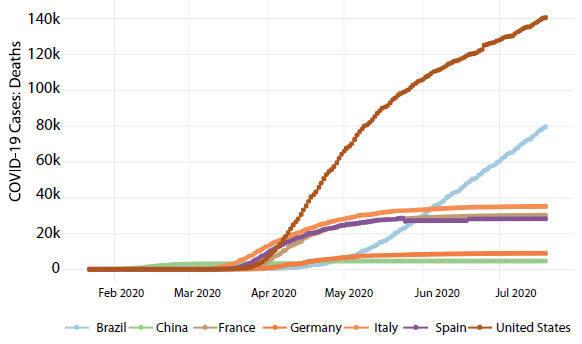 Source: World Bank
Source: World Bank Source: International Trade Centre
Source: International Trade Centre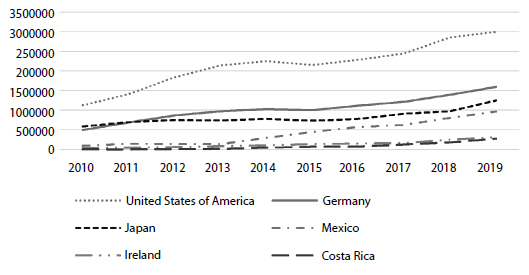 Source: International Trade Centre
Source: International Trade Centre Source: International Trade Centre
Source: International Trade Centre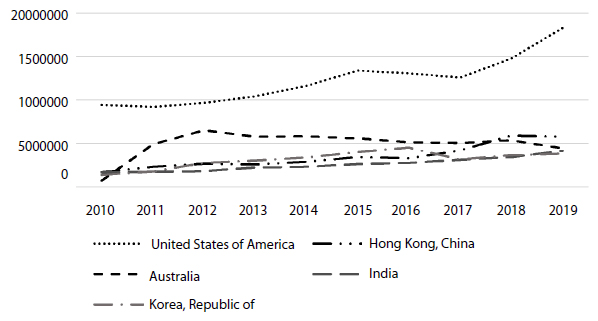 Source: International Trade Centre
Source: International Trade Centre Source: International Trade Centre
Source: International Trade Centre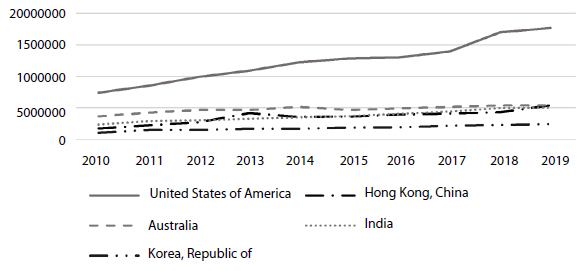 Source: International Trade Centre
Source: International Trade Centre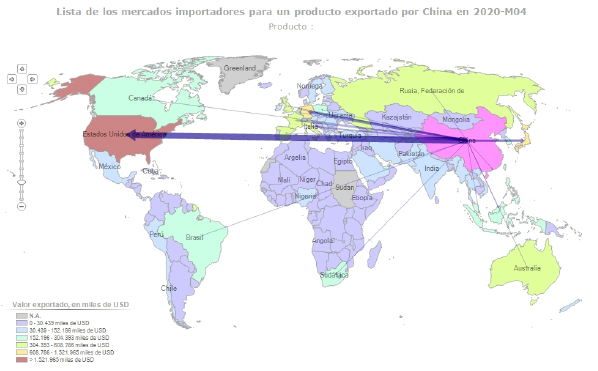 Source: International Trade Centre
Source: International Trade Centre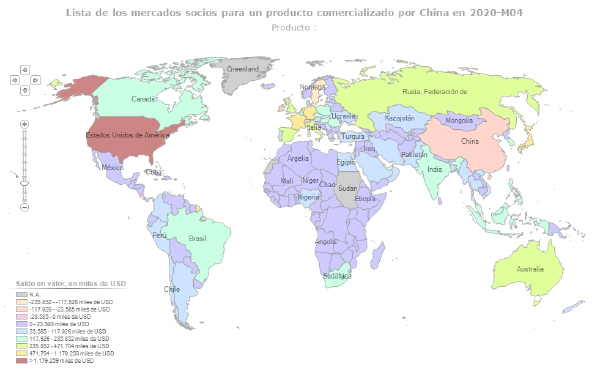 Source: International Trade Centre
Source: International Trade Centre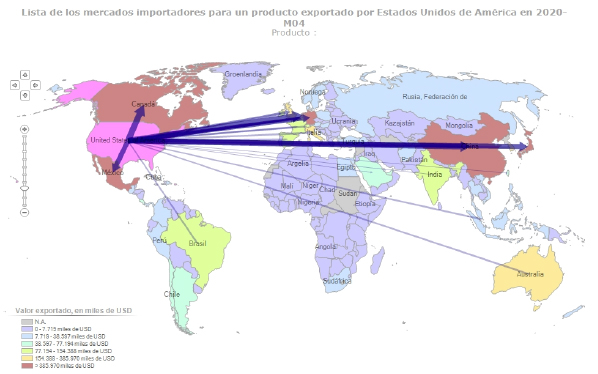 Source: International Trade Centre
Source: International Trade Centre Source: International Trade Centre
Source: International Trade Centre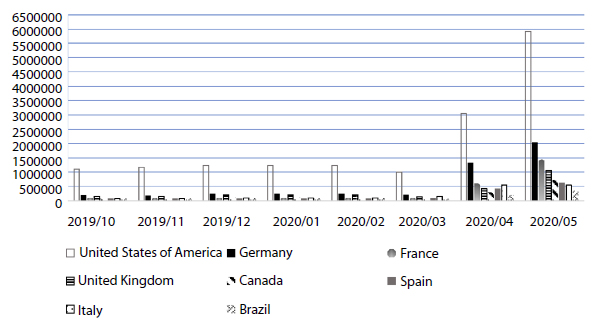 Source: International Trade Centre
Source: International Trade Centre Source: World Bank
Source: World Bank Source: World Bank
Source: World Bank